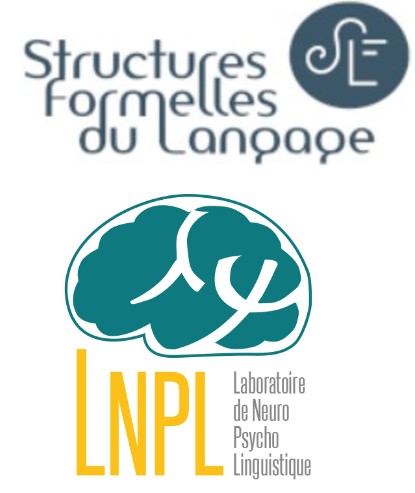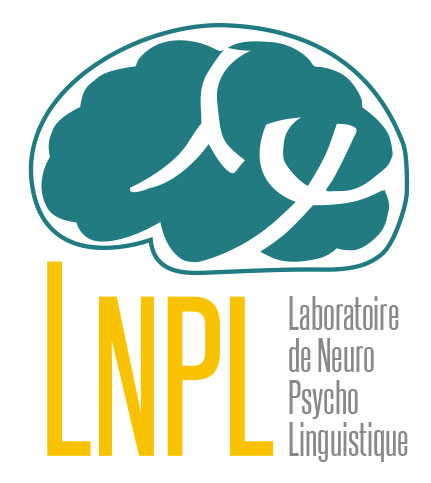- Recherche,
-
Partager cette page
Séminaire LNPL " Acquisition L2 et traitement L1", Sandra BENAZZO (Structures Formelles du Langage, Paris 8 et CNRS) et Regina HERT (LNPL, UT2J)

14h
Variété(s) de base et stades initiaux en L2: un itinéraire naturel et universel?
Sandra Benazzo, Structures Formelles du Langage, Paris 8 et CNRS.
Résumé. Il y a environ 30 ans, l’étude comparative des parcours acquisitionnels en L2 observés chez des migrants adultes dans le cadre du projet ESF (Perdue 1993) a permis d’identifier quelques stades initiaux dans l’appropriation d’une langue nouvelle en milieu naturel. Le développement similaire attesté dans les données longitudinales d’apprenants représentant dix différentes combinaisons de LS/LC a été ainsi défini en termes d’une succession de variétés d’apprentissage, chacune étant caractérisée par un répertoire linguistique et des règles combinatoires spécifiques.
Un rôle crucial dans cette perspective est joué par la notion de « variété de base » (VB, Klein & Perdue 1997), un système linguistique formellement simple mais communicativement efficace, largement indépendant des spécificités des langues en contact, dans lequel des items lexicaux de la LC sont organisés sur la base de principes sémantico-pragmatiques tels que focus last/ agent first. C’est dans la transition vers les variétés postbasiques qu’émergent les catégories morphosyntaxiques de la LC (Dietrich et al. 1995; Perdue, Benazzo & Giuliano 2002 ; Dimroth & Starren 2003 ; Hendriks 2005 ; Klein & Dimroth 2009 ; Becker 2012 ; Klein 2012).
La VB a été initialement attestée pour un profil spécifique d’apprenants, à savoir des migrants adultes faiblement scolarisés qui apprenaient la LC en immersion. On peut donc se demander si le même itinéraire serait valable pour d’autres profils d’apprenants et/ou contextes d’apprentissage.
Notre présentation discute cette question à la lumière d’études successives qui ont porté sur des populations et/ou contextes d’apprentissage différents de ceux initialement étudié par le projet ESF. L’objectif est de déterminer si et dans quelle mesure les propriétés centrales identifiées pour la VB doivent être adaptées lorsque l’on considère les variables suivantes : l’exposition à l’input didactique, le niveau de scolarisation de l’apprenant, et les spécificités des langues en contact.
Sandra Benazzo est professeure en acquisition de langue seconde à l'Université de Paris 8 (SFL, UMR7023). Accès à ses publications ici.
Références bibliographiques
Becker A. 2012. Finiteness and the acquisition of negation. In M. Watorek, S. Benazzo & M. Hickmann (éds.) Comparative Perspectives to Language Acquisition: A tribute to Clive Perdue (pp. 54-72). Clevedon: Multilingual Matters.
Benazzo, S., Dimroth, C. & Andorno, C. 2023. Back to the Basic Variety: does it emerge only with specific learner profiles, environments and languages? In C. Granget, I. Repiso & G. Fon Sing (éds.). Language, creoles, varieties. From emergence to transmission (pp. 29-70). Berlin: Language Science Press. [on line: https://langsci-press.org/catalog/book/409]
Dietrich, R., Klein, W. & Noyau, C. (1995). The acquisition of temporality in a second language. Amsterdam: John Benjamin
Dimroth, C. & Starren, M. (éds.) 2003. Information structure, linguistic structure and the dynamics of language acquisition. Amsterdam: John Benjamins
Hendriks H. (éd.) 2005. The structure of learner varieties. Amsterdam: John Benjamins
Klein, W. & Dimroth C. 2009. Untutored second language acquisition. In W. C. Ritchie, & T. K. Bhatia (Eds.), The new handbook of second language acquisition (pp. 503-522). Bingley: Emerald.
Klein, Wolfgang & Perdue, Clive. 1997. The Basic Variety or: Couldn’t natural languages be much simpler? Second Language Research, 13(4). 301–347.
Perdue, Clive (ed.). 1993. Adult language acquisition: Cross-linguistic perspectives. Vol.1 & 2. Cambridge: Cambridge University Press.
Perdue, C., Benazzo, S. & Giuliano, P. 2002. When finiteness gets marked: the relation between morphosyntactic development and use of scopal items in adult language acquisition. Linguistics 40 (4), 849-890.
15h
Focus marking and eye-tracking: what they can tell us about pronoun resolution
Regina Hert, Laboratoire de NeuroPsychoLinguistique, Université de Toulouse Jean Jaurès
The present talk includes two studies of my PhD thesis and aims to address to what extent focus marking can influence pronoun processing in German children and adults. In other words, can focus marking affect the link between a pronoun and its referent?
The first study investigates the effect of focus marking via it-clefts for the processing of referents as well as object pronouns and reflexives in children and adults. The results suggest that, unlike adults, children’s discourse processing is more local.
The second study manipulates information structure using prosodic focus marking and word order to investigate adults’ online use of focus cues in contrast to grammatical role for the resolution of subject and demonstrative pronouns.
The results show the personal pronoun to be affected more by subjecthood than focus marking, supporting the form-specific approach (Kaiser & Trueswell, 2008).
Both studies use eye-tracking as a tool to address the question whether prominence can explain pronoun interpretation preferences. It has been argued that the reason why certain referents are linked with a pronoun is that they are more prominent in the discourse than others (e.g. Arnold, Brown-Schmidt & Trueswell, 2007; von Heusinger & Schumacher, 2019). In contrast, the studies suggests that prominence cannot explain referent selection. While attention shifts to the focused referent during processing, that effect does not always proceed to the final interpretation of the pronoun.
Regina Hert est chercheuse postdoctorante dans le projet BILDEV.

